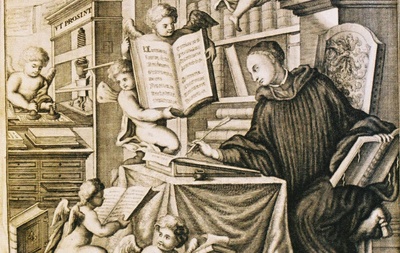
The Pez Brothers' Correspondence
The learned correspondence of Bernhard and Hieronymus Pez
In 1709, Bernhard Pez, a young Austrian Benedictine monk wrote his first encyclical letters to fellow monasteries in all parts of Europe. His goal was to create a universal bio-bibliographical dictionary of his order, a project that, although it could not be realized over the following decades, inspired many spin-off publications and one of the most interesting scholarly correspondences in eighteenth-century Central Europe.
In their exchange with fellow monks and scholars, Bernhard and his brother Hieronymus Pez discussed with their correspondents library and archive holdings of a medieval history oscillating between its ecclesiastical, regional and dynastic dimensions. Of particular interest are sources that are lost today or that regard medieval controversies – such as those between secular and regular clergy, or between pope and emperor – which were still being politicized in the eighteenth century.
Two volumes of the Pez letters, covering the years 1709-1718 and roughly half of the entire material, were published in print and PDF in 2010 and 2015:
Thomas Wallnig–Thomas Stockinger, Die gelehrte Korrespondenz der Brüder Pez. Text, Regesten, Kommentare, 1: 1709–1715 (Wien–München 2010). https://e-book.fwf.ac.at/o:370
Thomas Stockinger–Thomas Wallnig–Patrick Fiska–Ines Peper–Manuela Mayer, unter Mitarbeit von Claudia Sojer, Die gelehrte Korrespondenz der Brüder Pez. Text, Regesten, Kommentare, 2: 1716–1718 (Wien–München 2015). https://e-book.fwf.ac.at/o:824; https://e-book.fwf.ac.at/o:825
Between 2019 and 2024, financed by FWF project “dQIÖG”, these volumes have been transformed into a digital scholarly edition which will be available online (along with the data) for the first time on the Brill Scholarly Editions Platform in October 2024.
This publication has been made possible by the Austrian Science Fund (FWF): PUD23. It is also based on results from: Austrian Science Fund (FWF), P16940, Y390, and P28016.
The remaining Pez letters will be published in the same hybrid format during the course of the coming decade.

